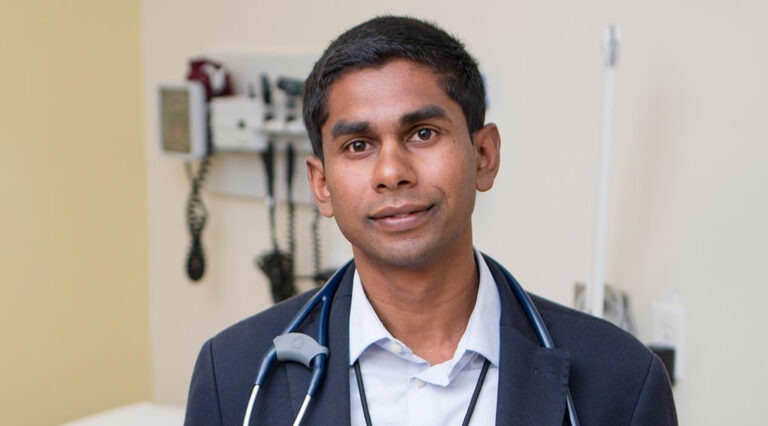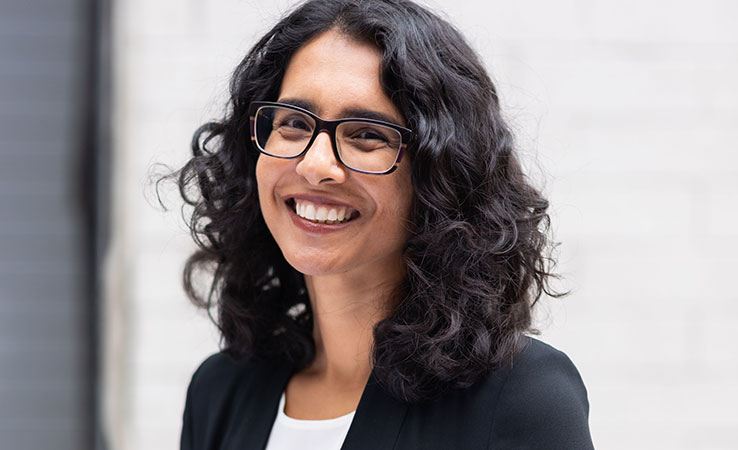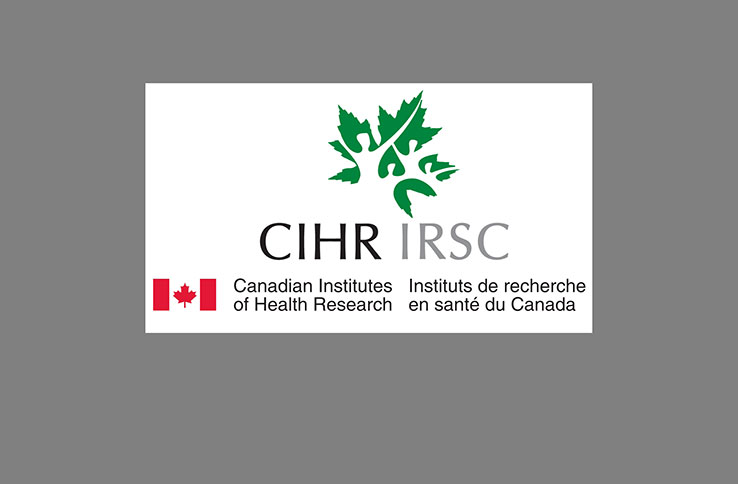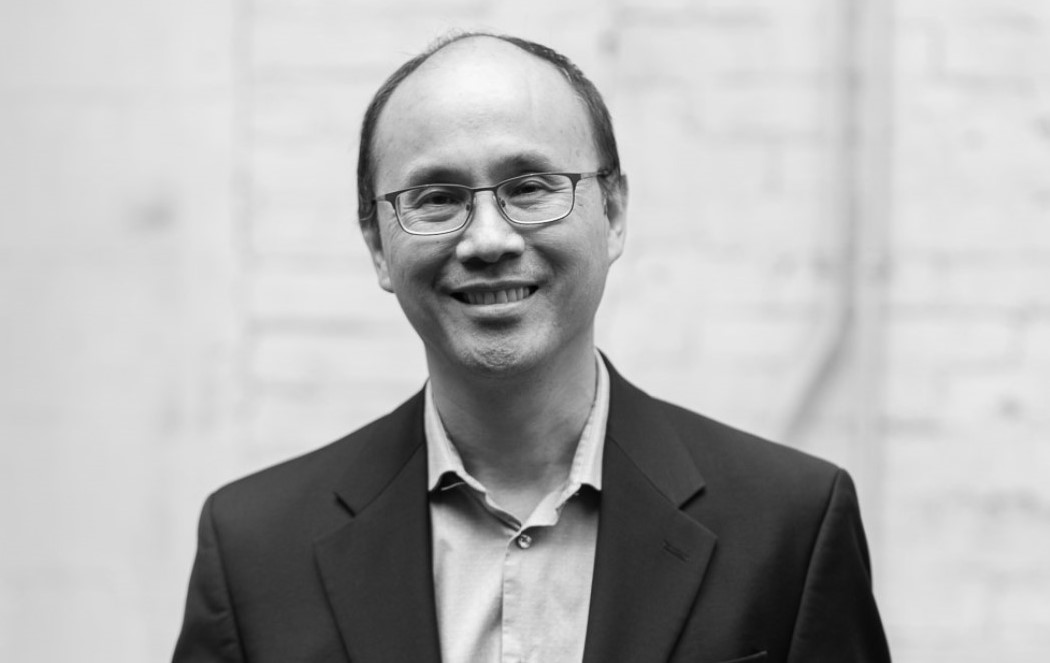Family physician and primary-care researcher Dr. Tara Kiran talks with the CBC’s Andrew Nichols about vaccines, restrictions and the rollout – and how her cohort of family doctors could help administer doses.
Month: March 2021
Canada should copy San Francisco’s quarantine strategy for the homeless: advocates
From the CTV News article:
…“If we don’t house people who are homeless, we often end up paying for the cost elsewhere and one of the most common places is within the health care system,” Dr. Stephen Hwang, the director of MAP Centre for Urban Health Solution at St. Michael’s Unity Health Toronto, told CTVNews.ca in a phone interview.
He said the approach prevented unnecessary hospitalizations and the new research bolstered public health officials’ general idea of allowing people with no fixed address to isolate in repurposed hotels in cities, which has be done in some Canadian cities, such as Calgary and Vancouver.
Hwang, a leading researcher in homelessness and housing who was not involved in the study, said those who were readmitted to hospital were more likely readmitted for “behavioural, mental health or addiction needs, rather than because they had worsening COVID.”
He said this finding echoed what he saw in similar programs in Toronto.
Anxiety drug increasingly found in opioid supply of overdose victims
Interview with Karen McDonald, Research Program Manager at MAP’s Centre on Drug Policy Evaluation
A class of drugs commonly used to treat sleep and anxiety disorders is increasingly being found in the illicit opioid supply, raising the risk of overdose, producing complex overdoses that are more difficult to reverse and rendering medications used to treat substance use disorders ineffective in some cases. Drug-checking services across Canada have detected benzodiazepines in half or more of samples expected to be opioids, with adulteration increasing significantly during the pandemic. Karen McDonald, the lead for Toronto’s drug-checking service, says that 20 of the expected fentanyl samples checked over the past two months were associated with overdoses; of those, 18 contained fentanyl and at least one benzodiazepine-related drug. She says her service is working with clinical partners to study the changing drug supply, but that an unregulated market can change on a dime.
Dr. Nav Persaud testifies at the US Senate on the value of making essential medicines free for everyone
MARCH 23, 2021
MAP scientist Dr. Nav Persaud was invited to speak to the US Senate today at a subcommittee hearing entitled, “Why does the US pay the highest prices in the world for prescription drugs?“
Dr. Persaud is introduced by Senator Bernie Sanders.
“America is a superpower,” Dr. Persaud told the committee. “A superpower that has not shown its strength in standing up to pharmaceutical companies that rip off Americans – as proven by the price differences for patented medicines across our border.”
He went on to describe the success of his CLEAN Meds study.
“My colleagues and I have conducted a randomized controlled trial of distributing essential medicines… to people who report not being able to afford them,” said Dr. Persaud. “We found improvements in the control of blood pressure and diabetes, fewer missed medical appointments, and total health-care savings that averaged more than a thousand dollars per patient per year. The biggest benefit was in the ability to ‘make ends meet’ or afford basic necessities such as rent and food: only 29% in the usual access or control group could make ends meet, but 86% of those who did not have to pay out‐of‐pocket for medicines could afford necessities. A farmer in our study, for example, was better able to grow food when he had asthma puffers.”
Download a PDF of Dr. Persaud’s testimony, including his recommendations to the Senate on what the American government can do to reduce drug spending while promoting access and equitable care.
MAP names Zoë Dodd the inaugural MAP Community Scholar
Zoë Dodd (South Riverdale Community Health Centre) has been named the inaugural Community Scholar at MAP Centre for Urban Health Solutions.
A Hep C Program Coordinator and harm reduction worker at South Riverdale CHC, Dodd has worked in harm reduction for almost 20 years as a program coordinator, organizer and advocate. At South Riverdale CHC, she works with a diverse community of people; primarily people who use drugs.
“I’m thrilled to have this opportunity to focus on scientific research and system-wide solutions,” said Dodd. “At MAP, I plan to work with community to examine the drug treatment system. I think this research is crucial and timely given the state of drug policy in Canada and the overdose crisis.”
MAP launched the Community Scholar Program to bring community experts and scientists together to develop and test solutions that directly address community priorities and needs. For a one-year period, Community Scholars work with MAP scientists, staff and students, and others at Unity Health Toronto to develop a full-time, independent program of research.
“Zoe is a tireless advocate for people who use drugs and has worked on the development and implementation of harm reduction programs, and improving the conditions for our most marginalized community members” said Jason Altenberg, CEO at South Riverdale CHC. “Given the devastating effects of the opioid crisis, we are excited that she will have the opportunity to continue to look critically at the drug treatment and policy in Canada through this work.”
Dodd will be mentored by MAP scientist Dr. Ahmed Bayoumi with the support of Dr. Michelle Firestone. Dodd’s role will include working with people who use drugs to set specific research priorities in an often-overlooked area of study: people’s healing and well-being beyond a medicalized and abstinence-based concept of recovery.
“I can think of no better candidate for this position, as Zoë is already one of my most valued and thoughtful colleagues on research projects,” said Dr. Bayoumi. “I believe that her research questions, particularly those related to incarceration, mandatory drug treatment, and alternatives, have the potential to inform, and even to guide, polices relating to drug use in Canada. MAP scientists will learn much from her extensive knowledge of drug-related issues and her strong connections to clients, peer workers, community health agencies, public-health leaders and decision makers.”
A long-time collaborator on MAP projects, Dodd is an investigator in Dr. Dan Werb’s study to rapidly assess the impact of the COVID-19 pandemic on people who inject drugs in Toronto, and is co-leading Drs. Ahmed Bayoumi, Michelle Firestone, and Dan Werb’s Our Space Solutions Network as well as an evaluation arm of the MAP MARCO project.
Dodd has a Masters degree in Environmental Studies focusing on the experiences of people who use drugs with mandated drug treatment. She has served as a member of the provincial Opioid Task Force as well as the Toronto Overdose Prevention Society, the Toronto Drug Strategy Implementation Panel, and many other committees. Among her many awards are NOW Magazine’s Activist of the Year (2019) and CBC Toronto’s Torontonian of the Year (2017).
About MAP Centre for Urban Health Solutions
MAP is a world-leading research centre dedicated to creating a healthier future for all.
Through big-picture research and street-level solutions, our scientists tackle complex urban health issues — many at the intersection of health and inequality. Internationally recognized for groundbreaking science and innovation, MAP is changing the way the world understands the health consequences of social inequality in cities.
Together with our community and policy partners, we are charting the way to the world’s healthiest cities: places where people, communities, and the political, economic, social, environmental, and health infrastructures come together so that everyone can thrive.
MAP is part of the Li Ka Shing Knowledge Institute of St. Michael’s Hospital and is fully affiliated with the University of Toronto. St. Michael’s is a site of Unity Health Toronto, which also includes Providence Healthcare and St. Joseph’s Health Centre.
About South Riverdale Community Health Centre
South Riverdale Community Health Centre is a non-profit, multi-service organization that provides primary healthcare, social and community outreach services with an emphasis on health promotion and disease prevention primarily to people of East Toronto.
Our mission is to improve the lives of people that face barriers to physical, mental, spiritual and social well-being. We do so by meaningfully engaging our clients and communities, ensuring equitable access to primary health care, and delivering quality care through a range of evidence informed programs, services and approaches.
As a leader in community health, our locally and internationally recognized community services include cutting-edge primary health services, health promotion, harm reduction, environmental health, community food centre and population-based community programs for marginalized peoples. We value health equity and inclusion and respect in our work and in the delivery of our services.
A year of COVID — a time of learning and caring
From the article in The Catholic Register:
…In the middle of a phone interview about the last year of responding to COVID at St. Michael’s Hospital, Dr. Stephen Hwang’s other phone goes off, Seaton House, Toronto’s largest shelter, on the line.
Fifteen seconds later he’s back on the phone. “It’s too early to really meditate on those questions right now,” he said.
COVID is far from over for Catholic health care — which doesn’t mean that Hwang, a world-renowned researcher in health and homelessness, isn’t thinking about what the novel coronavirus has been teaching him and his colleagues at St. Michael’s. Hwang is launching a new research project to track the path of the disease through Toronto’s shelter system and the city’s growing network of encampments.
“We treat the medical complications of the social issues of our time,” he said.
While social media and newspapers are filled with descriptions of the biology of the virus and technical details about vaccines, as a research scientist Hwang is interested in how the disease plays out in society. Who gets sick, how sick they get and what happens after they get sick has everything to do with poverty, race, social exclusion and the mental health effects of how our economy and institutions sort people into categories.
“We’ve had calls from shelters, shelter operators, asking for help doing screenings during outbreak situations. We’ve had our emergency department flooded with patients who were homeless, awaiting test results and who had no place to go. (St. Michael’s) essentially had to temporarily make part of the emergency department into a shelter. We’ve admitted patients to the hospital with COVID who have either no place to go or home situations that mean that they have to stay (in hospital) much longer than average,” Hwang said. “We’ve done the best we can under the circumstances. It’s part of our purpose.”
Why have family doctors been overlooked in vaccine rollout?
Last fall the same scenes played out in hundreds of communities across Ontario.
People walking through the front door of a clinic and being ushered into an exam room. Others sitting in cars lined up in the parking lot of a community building, extending their arms out the window. A few confined to their home, answering their doorbell and smiling to greet a trusted face.
Each scene ends in the same way — with a person receiving their flu shot from their family doctor.
Family doctors and our teams administered more than half the flu shots in Ontario this season. Every day, we vaccinate people across the life cycle, from infancy to older adulthood. Vaccination is a core part of our job and we’re good at it.
Yet, family doctors in Ontario have been given no clear role in the most important vaccine rollout of our lifetime.
Just this week the province announced it signed a deal with pharmacists to have them deliver COVID-19 vaccines in the 4,600 pharmacies dispersed throughout the province. Pharmacists will leverage their experience with flu shots and estimate delivering 46 vaccines per pharmacy per day at its peak.
Much of this is good news. Pharmacies are an important part of Ontario’s vaccine distribution system and it makes sense the government is using them. But once again there was no mention of the role Ontario’s family doctors will take.
BIPOC Manitobans face disproportionate rates of COVID-19 infection, report finds
From the CBC News article:
…University of Toronto public health professor Andrew Pinto has advocated for provinces to collect data on race and ethnicity.
“I think it’s really significant that we have this data now, and it’s also the start in Canada in many ways of being comfortable around collecting data on race and ethnicity and Indigenous identity, and starting to really look at the issue of systemic racism through the routine collection of data — in this case as part of COVID, but also start thinking about this beyond COVID,” he said.
Now that the data has been collected, it remains to be seen what the province does with it.
“I think that this data for Manitoba fits what we’re seeing in other jurisdictions, from the UK to the US to other parts of Canada, which is that COVID is often racialized and is disproportionately affecting certain communities. They put at the start, that this is systemic racism, and really good to see that. and also this is about a bigger context,” Pinto said.
Some factors listed in the report that may increase the risk of infection for racialized people include employment — working in essential services, not having paid sick leave — as well as higher rates of underlying health conditions, inadequate and overcrowded housing, stress caused by systemic racism and discrimination, and barriers to accessing health care and social services.
Other factors that otherwise have effects on health and well-being, such as family and cultural gatherings, strong social networks and communal living, also contribute to higher risks of infection.
Four MAP-led research projects receive CIHR project grants
Four projects led by MAP scientists have received funding from the Canadian Institutes of Health Research (CIHR) Fall Project Grant competition.
CIHR project grants support researchers pursuing projects with the greatest potential to advance health-related fundamental or applied knowledge, health research, health care, health systems or health outcomes.
Burden of COVID-19 among people living with HIV in Ontario
People living with HIV, and who are taking medications to control their HIV infection, seem to get infected with COVID-19 and become hospitalized at a similar rate as the general population. But evidence in this area is mixed and more research is needed. Dr. Ann Burchell and her team will be conducting a study to identify the number of people with HIV who have been infected with COVID-19 since the start of the pandemic and determine whether people with HIV develop more severe illness compared to people who are HIV-negative in Ontario. The results of this study will be used to inform health care and health services planning for people living with HIV.
Identifying and mitigating bias in machine learning models used in population health
It’s well recognized that machine learning models, which are trained to recognize and learn from patterns in data, can replicate biases, whether in the data or among people developing the models. A project led by Dr. Andrew Pinto will explore machine learning models used in population health to identify biases and develop guidelines for model developers to reduce bias in machine learning models. The findings will support efforts to ensure that artificial intelligence applications contribute to reducing, rather than exacerbating, health inequities.
Preventing injecting and overdose by disrupting injection drug use transitions: The PRIMER II study
Research indicates that people who inject drugs – a key risk factor for overdose death – play a critical role in facilitating the entry of others into drug injecting. This study will investigate whether enrolling people who inject drugs into a medication-assisted treatment for opioid use disorder may reduce their risk of initiating others into drug injecting. The study will also examine the efficacy, adaptability and scalability of this approach for preventing injection drug use across various settings.
Identifying intersectional stigma intervention targets for people who inject drugs in a high-risk international setting
Persons who inject drugs often contend with stigmas related to HIV, drug use and drug treatment, reducing their access to key HIV prevention services. This study will investigate the ways that intersecting stigmas impede HIV prevention efforts among adults in Kyrgyzstan, which is home to some of the highest growth rates of HIV worldwide. The results of this study will help researchers develop stigma reduction intervention strategies tailored to urban and rural regions in Kyrgyzstan.
How investing in indoor air quality can reduce COVID-19 risk and help open up more space
By Stephen Hwang and Jeffrey Siegel
The cold weather has arrived in Toronto. At the same time, many of the places people use to warm up are not accessible. Due to COVID-19 pandemic measures, coffee shops and fast food restaurants are closed to indoor dining. Libraries are no longer letting people in, and many community centres have shut down. The community centres that are open are largely only offering bathroom access. Drop-ins designed to offer indoor space to people experiencing homelessness are also in shorter supply—there are approximately 19 drop-ins offering access to indoor space in February 2021, compared to 51 in 2019.
Health care providers have already noted the toll this loss of informal space is taking on people, describing an increase in cold-related injuries. This is supported by research from St. Michael’s Hospital demonstrating that while extreme cold temperatures put people at higher risk of hypothermia, most cases of injury and death due to cold occur in moderate winter weather. It is imperative that easily-accessible space is made available to everyone, 24-hours a day, and is not restricted to cold weather alerts.
But the risk of COVID-19 transmission in indoor spaces is real—recent data from St. Michael’s Hospital makes this clear. Much of this risk comes from the fact that transmission is airborne. The good news is that there are many steps that can be taken to reduce these risks, including the implementation of better ventilation and filtration practices.
It begins by opening up access to large, well-ventilated spaces, and keeping a very low occupancy relative to the space (for example, a few dozen people in a large arena). Physical distancing and masking protocols are also critical in reducing airborne transmission. When it comes to ventilation and filtration, lower-cost steps include the use of high quality portable filtration devices; running existing fans that exhaust to the outside (such as bathroom and kitchen fans); opening doors and windows where possible; paying careful attention to bathroom ventilation; learning more about how some devices affect airflow; and, periodically airing out spaces.
Those responsible for congregate spaces can also consult experts about the possibility of making small but impactful adjustments to heating, ventilation and air conditioning systems (also known as HVAC systems) to improve air quality. For example, some HVAC systems may be able to accommodate a higher-quality filter, or bring in more outside air. To address air quality in a comprehensive manner, an HVAC professional can assess a building’s entire ventilation system. If there is a budget for capital improvements, they may propose ways to retrofit the HVAC system, or suggest that it be replaced.
Each space and situation is different, and it’s difficult to make generic recommendations. Luckily, there are many resources that address air quality and COVID-19. We’ve put together a brief survey of strategies here. In January, the Public Health Agency of Canada released a report on ventilation strategies and COVID-19. Public Health Ontario also has a document on ventilation and a guide to using portable air filters. For more detail, the American Society of Heating, Refrigerating and Air-Conditioning Engineers has produced a guide to “Epidemic Building Readiness,” and the Canadian Standards Association has released “Workplaces and COVID-19: Occupational Health and Safety Considerations for Reopening and Operating During the Pandemic.”
We encourage those responsible for congregate spaces to review these resources and to think about how to apply these principles and strategies. We also encourage people to consult with indoor air quality and infection control experts—many experts work for public institutions such as universities, and can provide advice. Finally, we encourage funders large and small to make rapid-access funds available immediately to help congregate spaces of all kinds improve air quality, and reduce airborne transmission of COVID-19.
Investments to improve indoor air quality will reduce transmission risk of COVID-19 and other airborne infectious diseases. They will improve health and quality of life for those who use, live in, and work in congregate settings. They will also help to ensure that key indoor spaces can stay open, even during a pandemic.
Stephen Hwang is a physician and the Director of MAP Centre for Urban Health Solutions at St. Michael’s Hospital, a site of Unity Health Toronto.
Jeffrey Siegel is an air quality expert and a Professor in the Department of Civil and Mineral Engineering at the University of Toronto.






